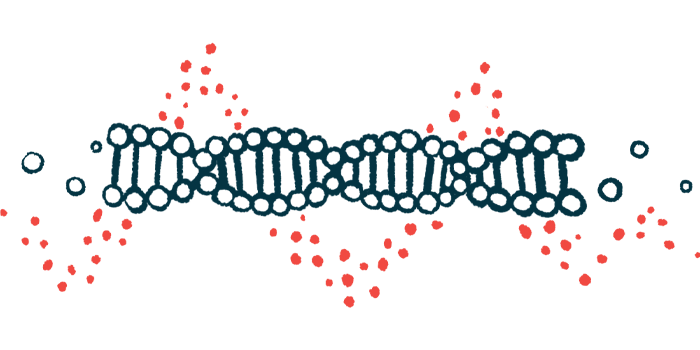Mutation in MIA3 gene a likely cause of hEDS, study suggests
Larger study finds variant in 1 woman with hypermobile EDS

A mutation in the MIA3 gene, found in a woman in Poland as part of a larger study, was deemed to be a likely cause of hypermobile Ehlers-Danlos syndrome (hEDS), the most common form of EDS.
The variant was found in a 49-year-old hEDS patient and in her daughter — and the woman said her own mother had “symptoms similar to her own but in a milder form,” the study reported.
The MIA3 gene contains the instructions for a protein important for the secretion of collagen, which provides strength and support to organs and tissues in the body.
These findings suggest that “the presence of [this variation] in the MIA3 gene and disrupted secretion of connective tissue protein may be one of the pathogenic [disease-causing] mechanisms of clinical symptoms present in the tested patient,” the researchers wrote.
The study, “A novel mutation in collagen transport protein, MIA3 gene, detected in a patient with clinical symptoms of Ehlers–Danlos hypermobile syndrome,” was published in the journal Advances in Clinical and Experimental Medicine.
MIA3 gene linked to collagen secretion in hEDS
hEDS is characterized by symptoms such as unusually mobile joints, chronic pain, and fatigue. Contrary to all other 12 types of Ehlers-Danlos syndrome, the specific mutations that cause hEDS have not been identified.
Collagen is a major component of the extracellular matrix (ECM) — the mesh-like scaffold surrounding cells. However, past studies on hEDS patients suggested that certain types of collagen, as well as other ECM proteins, are stuck inside cells.
These findings suggest that impairments in collagen transport out of cells “may be one of the components of the molecular background of clinical symptoms of hEDS.”
Now, researchers at the Nicolaus Copernicus University, in Poland, investigated the potential role of the MIA3 gene in hEDS.
The gene contains instructions for the production of a protein called transmembrane protein transport and Golgi organization — dubbed TANGO1 — which facilitates a step in the cellular transport of collagen proteins toward the cell surface.
The study included a total of 100 hEDS patients of Polish origin, as well as 100 healthy volunteers from the general population in Poland. The patients ranged in age from 17-63, and 84 were women. The volunteers, who served as controls, were matched by age and sex with the hEDS patients but had no family history of the genetic disorder.
DNA was extracted from immune cells called leukocytes and then analyzed for mutations in the MIA3 gene. Genetic testing excluded the presence of other types of EDS or connective tissue disorders.
Five mutations in the MIA3 gene were detected in 14 of the group of hEDS patients. Four of these mutations were missense and were deemed benign or likely benign. The remaining genetic change was a frameshift variat and was classified as likely disease-causing.
A missense mutation results in a different amino acid in the protein; a frameshift mutation is one that by DNA deletion or insertion shifts the way the sequence is read.
All mutations were present in one of the two copies of the gene (called heterozygous mutations). None of the healthy volunteers carried any of the mutations identified.
The likely disease-causing mutation was found in a woman who showed unusually mobile joints, recurrent dislocations, and long, slender, and curved fingers — a condition called arachnodactyly. She had experienced chronic severe pain in the joints and spinal cord since childhood.
Additional symptoms for this patient included hyperextensible and easily bruising skin, as well as fatigue.
[The findings suggest that] MIA3 or other genes involved in connective tissue protein secretion should be taken into account as potential etiological [causative] factors in connective tissue hereditary diseases, including hEDS.
Her family history included a 14-year-old daughter with hypermobility accompanied by chronic joint pain, in addition to scoliosis, or curvature of the spine. The daughter also had soft, hyperextensible skin, and blue sclerae — a blue tint in the white of the eyes.
Her first symptoms, which were more severe than her mother’s, appeared when she was around 10 years old. The teen also carried the same mutation in the MIA3 gene as her mother. Both were initially diagnosed with rheumatoid arthritis.
Height and bone density were normal in both mother and daughter. The grandparents chose not to participate in the study, so no genetic analysis was conducted.
However, according to the mother’s report, her own mother had similar symptoms, although milder and starting later.
Overall, these findings suggest that “MIA3 or other genes involved in connective tissue protein secretion should be taken into account as potential etiological [causative] factors in connective tissue hereditary diseases, including hEDS,” the researchers wrote.
“However, their role in the process requires much wider investigation,” they concluded.







